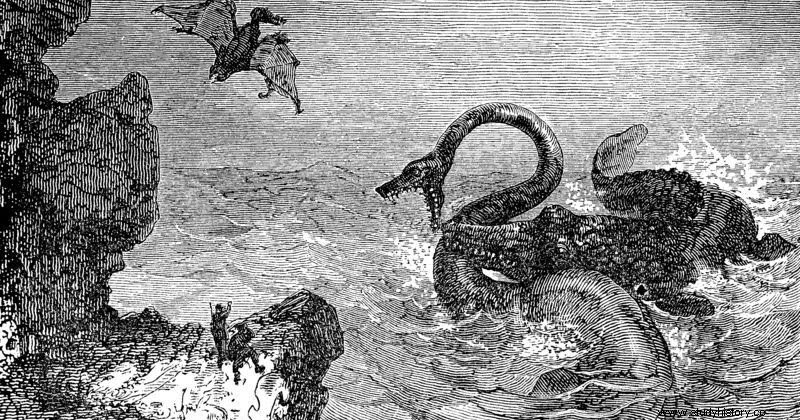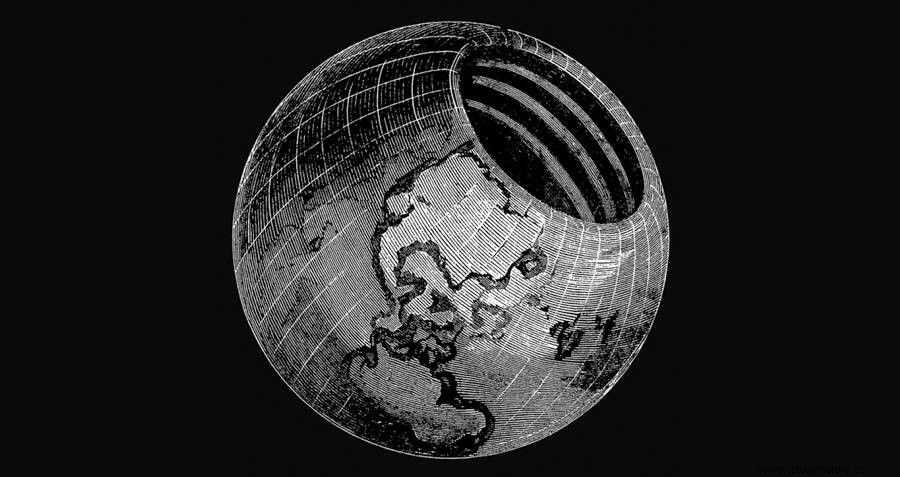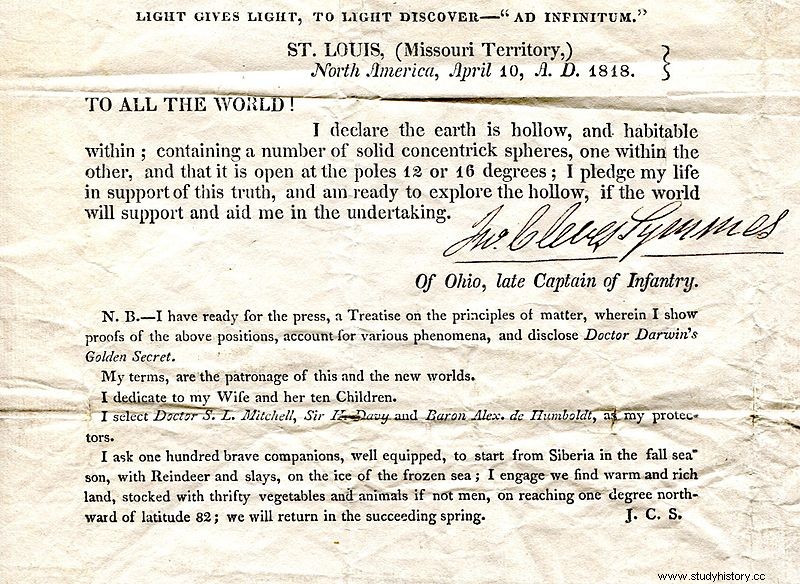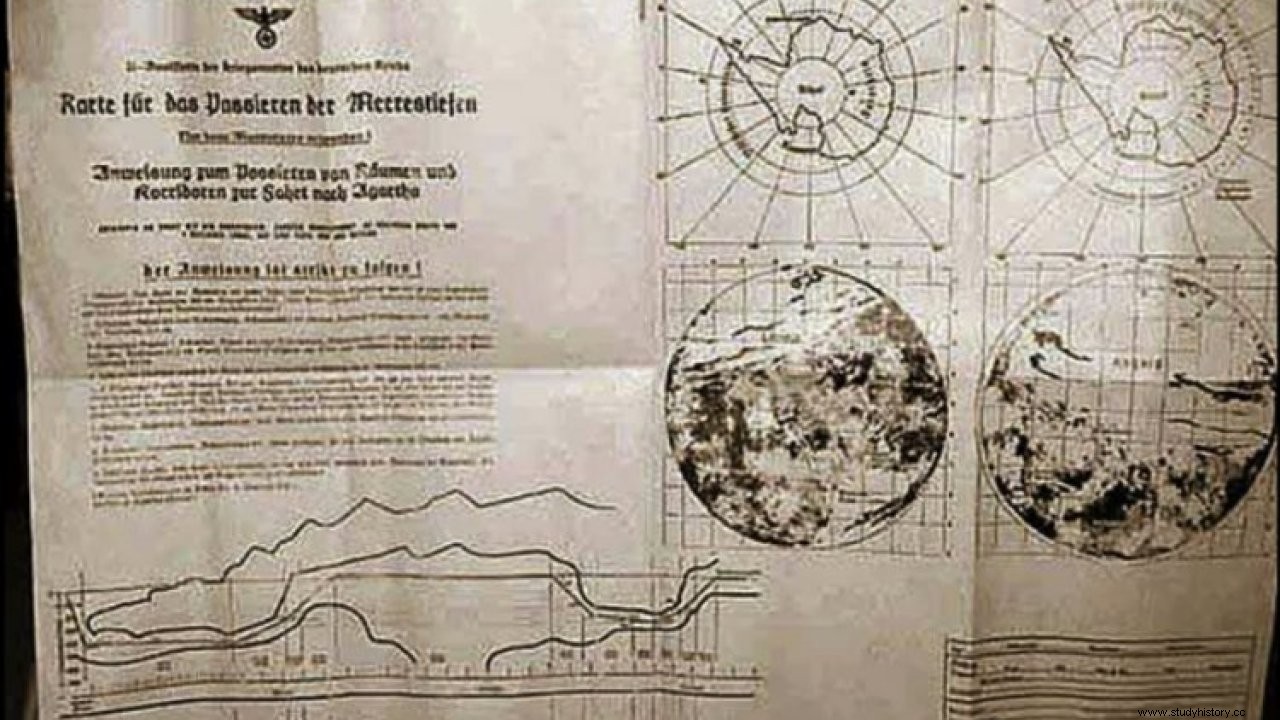We could be talking about the novel Journey to the Center of the Earth of the writer Jules Verne, but no. This time we are not talking about science fiction, but about reality. A reality that surpasses the fiction of the French visionary, an expedition from the United States to the center of the Earth to trade with its inhabitants. For this, two circumstances have to be met:an enthusiast who defends the theory that there is life in the center of the Earth and that you can travel there, and a somewhat eccentric American president who is willing to believe it. And hunger came together with the desire to eat:John Cleves Symmes Jr., an ex-military man turned merchant and, apparently, with free time to develop pseudoscientific theories, and the president John Quincy Adams

Although the most popular reference to this extraordinary journey is the novel Voyage au center de la Terre , which Jules Verne published in 1864, in 1741 the Norwegian author Ludvig Holberg already wrote Nicolai Klimii Iter Subterraneum (Niels Klim's journey to the underworld), a science fiction novel that takes place in a utopian society that exists in the center of the earth. So, it seems that it has been a theme of fantastic literature but without any basis, beyond the authors' own imagination. Well no. Edmund Halley (1656–1742), known for having calculated the orbit of a comet that passes the Earth every 76 years and bears his name, at the end of the 17th century he decided to stop looking at the sky and look at what was under his feet and proposed the theory that the Earth was hollow and populated. Halley's theory sought an explanation for anomalous compass readings, and he suggested that there were various magnetic fields. Based on this, he developed the idea that the Earth was made up of four concentric hollow spheres, separated by atmospheres and each with its own magnetic poles, and that the inner sphere would be populated with life. In addition, he explained the phenomenon of the northern lights, which would be nothing more than gases that filtered from these atmospheres.

And here comes our friend John Cleves Symmes Jr, who took up this theory and defended it vehemently. In 1818 he postulated his particular vision:the earth is hollow and habitable inside, it contains a number of solid concentric spheres, one inside the other, and it is open at the poles, through which the light and heat of the sun penetrate and, logically, , from where you can make it to the inner sphere.
I promise to pledge my life to it, and if the world supports and helps me in this endeavor, I am ready to explore the void.
Since he considered the center of the Earth (the inner sphere) to be inhabited, his expedition also included establishing trade relations with them. So, he sent letters of his theory to "every notable foreign government, ruling prince, legislature, city, university, and philosophical society, throughout the world «.

Symmes Letter
Although he received no reply to his missives, he continued to go wrong:in 1820 he published Symzonia:Voyage of Discovery , advocating expeditions to the poles to prove his "Hollow Earth." Without news from abroad, but his idea becoming popular, he got the support of some influential people who sent his project to President John Quincy Adams, a mind restless about knowing the natural world, although at times somewhat eccentric. In 1828, President Adams, perhaps fascinated by the expedition to the poles more than by the hollow earth, replied that he was willing to finance it, but in 1829 two events occurred that ruined the expedition:Symmes died and, in addition, Adams was not elected to a second term - his successor Andrew Jackson quickly dismissed him. Everything was left in borage water.
We owe the Smithsonian Institution, an education and research center with 19 associated museums, which, with more than 138 million pieces, and growing, has the best natural history collection in the world. The Smithsonian Institution was founded in 1846 with funds bequeathed by the British scientist James Smithson , fascinated by geology and mineralogy, who, however, never set foot in the United States. Smithson amassed a fortune which he bequeathed to his only nephew. But he stipulated that if his nephew died childless - as she did - his fortune should go "to the United States of America, to found in Washington an establishment for the increase and diffusion of knowledge among men." «. When Smithson's nephew died without heirs in 1835, U.S. President Andrew Jackson informed Congress of the unexpected bequest, amounting to some $500,000 at the time (currently about $12 million before inflation, and having it would have to add a zero). Despite the majority opinion of Congress, which wanted to employ him in other tasks that had nothing to do with science and knowledge, former President Adams - he left politics for a year and in 1830 was elected congressman again - was the one who fought to arm split by the creation of the institution. After a hidden struggle and much back and forth, in 1846 Congress voted to create the Smithsonian Institution with a board of regents to run it, who had nothing to do with politics. They knew what they were doing.
By the way, the Hollow Earth theory was also handled by the esoteric Ahnenerbe , the Society for Research and Teaching on the German Ancestral Heritage, which was dedicated to organizing archaeological, anthropological and ethnographic expeditions throughout the world in search of objects of power (Holy Grail and the like) and, logically, of the origin of the Aryan race. This was the map handled by the Nazis...

